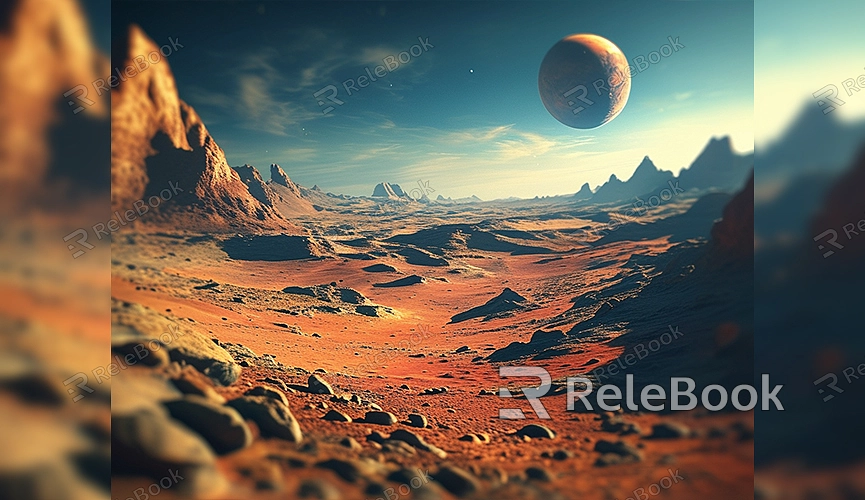How to render on blender roblox
In Roblox game development, although Blender and Roblox are separate tools, importing high-quality models and rendered effects from Blender into Roblox can significantly enhance the visual appeal of your game. This guide will walk you through how to render in Blender for use in Roblox, providing practical tips to help you achieve excellent visual results in your Roblox projects.
Blender and Roblox Integration
Blender is a powerful 3D modeling and rendering tool, while Roblox is a user-generated content platform that allows developers to create and publish their own games. After creating and rendering models in Blender, you can import these models into Roblox for use in your game. Here’s how to effectively render in Blender and prepare models for Roblox:

1. Create and Optimize Models
Start by creating your models in Blender. Use Blender’s various modeling tools to create the 3D objects you need. To ensure that your models work smoothly in Roblox, consider the following:
- Low Polygon Modeling: Roblox has limits on the number of polygons a model can have. To ensure good performance in the game, use low polygon modeling techniques. Reducing the number of polygons can enhance game speed and smoothness.
- UV Layout: In Blender, use the “UV Editing” feature to unwrap your model’s surface into a 2D texture map. Roblox requires that textures be applied via UV unwrapping, so make sure the UV layout is free of overlaps and stretching.
2. Set Up Textures and Materials
Creating and applying textures in Blender is a crucial step in rendering. Use Blender’s “Shading” workspace to set up materials and textures. Keep the following in mind:
- Texture Resolution: Roblox has specific texture resolution requirements. It is generally recommended to use lower resolutions (such as 512x512 or 1024x1024) to ensure that textures perform well in the game and don’t affect performance.
- Export Textures: Make sure to export texture images from Blender in common formats like PNG or JPG. These formats work well in Roblox.
3. Rendering Settings
Although Roblox does not directly support Blender’s rendering results, you can use Blender’s rendering features to generate texture maps and effect images. Here are some rendering settings to consider:
- Choose a Render Engine: In Blender’s “Render Properties” panel, select the appropriate render engine. Cycles provides higher quality rendering, but for texture maps, using the Eevee engine can also produce sufficient results.
- Render Output: Set the resolution and format for your renders. Typically, for texture maps, a resolution of 2048x2048 pixels provides adequate detail, while for effect images, you might choose a higher resolution.
4. Export Models and Textures
Once your models and textures are set up, you need to export them in formats supported by Roblox. Roblox supports various file formats, with FBX and OBJ being the most commonly used. Here’s how to export:
- Export Models: In Blender, go to “File” > “Export” > “FBX” or “OBJ.” In the export settings, ensure you select the correct options, such as “Include Materials” and “Include Textures.”
- Export Textures: Ensure that texture images are exported from Blender and saved in the same folder as your model files. This way, textures will be correctly applied to the model when importing into Roblox.
5. Import into Roblox
Import the exported model and texture files into Roblox Studio. Here are the steps for importing:
- Open Roblox Studio: Launch Roblox Studio and open your project.
- Import Models: In Roblox Studio, select “Asset” > “Import” to import your model file. Choose your exported FBX or OBJ file and wait for the import to complete.
- Apply Textures: In Roblox Studio, apply the textures previously exported to the model. You can adjust material settings in the “Properties” panel to ensure textures display correctly on the model.
Creating and rendering 3D models for Roblox in Blender is a task that requires patience and skill. By properly creating and optimizing models, setting appropriate textures and materials, and correctly exporting files, you can achieve stunning visual effects in your Roblox game. We hope the steps and tips provided in this guide help you successfully complete the Blender to Roblox rendering process. For high-quality 3D textures and HDRIs, you can download them for free from [Relebook’s texture site](https://textures.relebook.com/). If you need beautiful 3D models, visit [Relebook’s model site](https://3dmodels.relebook.com/) where Relebook offers a wide range of premium 3D resources. With ongoing practice and optimization, you will be able to create exceptional 3D models, enhancing the quality and experience of your Roblox projects.

